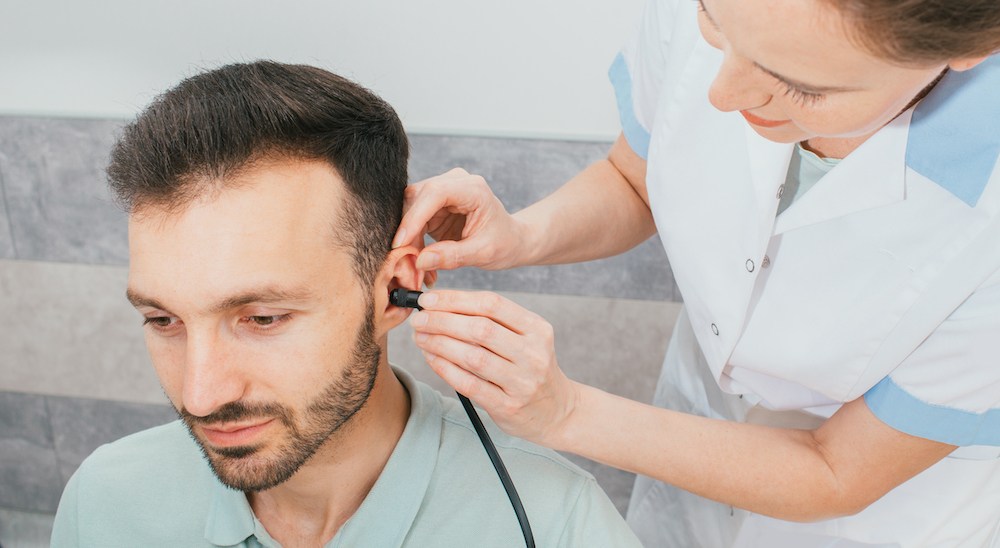The Challenges of Using Hearing Aids in Cold Weather
Winter is on its way, and with it comes a unique set of challenges for

By: admin | November 25, 2023
Ensuring your overall well-being involves making regular hearing tests a priority. These tests play a crucial role in catching any potential hearing issues or related conditions early on. Though the idea of navigating the world of hearing tests might seem uncertain, understanding what to expect during the evaluations and how to read your results goes a long way in making the process more manageable and informative.
Booking a hearing test with an audiologist is easy enough and is something you should be doing routinely, depending on your age or symptoms. For adults, having a hearing test every five years is generally recommended, especially if there are no noticeable issues. As individuals age, regular hearing check-ups become increasingly important. For seniors, an annual hearing test is often recommended due to the higher likelihood of age-related hearing loss and the potential benefits of early detection and intervention. Consistent monitoring allows for timely adjustments in hearing care, ensuring that any changes in auditory health are promptly addressed for an improved overall quality of life.
With your hearing test, you’ll speak to your audiologist about your hearing, what you feel might be a problem, or whether there are any tell-tale signs of hearing loss that you’ve spotted. From there, your audiologist will run a few tests to determine the quality of your hearing and to assess your auditory health in general.
An audiogram is the visual result of an audiometry hearing test. This test is something you’ll likely see when it comes to measuring the potential hearing loss that you’re experiencing. The test will use an audiometer, a type of technology that measures sound intensity and frequency. You’ll get this audiometry hearing test and then the audiogram will be one of the results provided to you for you to look at.
Once you’ve received the results, chances are, you’ll be staring blankly back at your audiologist as they explain what they’ve found. When you receive an audiogram, you’ll find that each axis measures something different. Typically, you’ll see the following:
From this graph, there are a number of visual results that would indicate how healthy your hearing is currently. A steady line will indicate normal hearing, and a line that rises and drops indicates hearing loss for certain frequencies. A line that slopes down for high frequencies is common for those experiencing age-related hearing loss. For a line that’s lower on the chart, it’s a more extreme form of hearing loss.
By knowing what to look for when it comes to the results of the audiogram, you’ll likely have a better understanding of just how severe the hearing loss may be.
So, how does hearing loss occur usually? There are many contributors to hearing loss, which is why it’s important to be clued up on what to look out for and how to avoid them where possible. Some people are born with hearing loss, whereas others can develop it later on in life. It’s common for many people to experience hearing loss as they get older, but that doesn’t mean it shouldn’t be addressed by a professional. Here are some of the typical scenarios in which hearing loss can occur:
If you’re looking to prevent hearing loss from occurring, then there are a few best practices that can certainly be useful to embrace. First, if you’re working in an environment where there’s a lot of loud noise, consider wearing ear protectors. Try to remove yourself from loud environments wherever possible to give your ears a break.
Making sure to attend regular hearing appointments with an audiologist is important too. You might want to be conscious about any medication you take, which could have side effects that affect your hearing. Within the home environment, be careful of listening to the radio or watching the television on a loud volume. These are all simple habits that might contribute to hearing problems further down the line.
If you’re experiencing any form of hearing loss or you’re worried about your hearing in general, then it’s best to go for a hearing test. This is the best way to assess and diagnose a potential hearing loss or problem. Interested in learning more about hearing loss and the testing process? Get in touch with Sommerville Audiology & Hearing Aid Center at 586-298-3788 today.
Tags: audiogram, faqs, hearing test results

Winter is on its way, and with it comes a unique set of challenges for
By: admin | January 31, 2024

When it comes to hearing aids, there are plenty available on the market,
By: admin | December 28, 2023

Ensuring your overall well-being involves making regular hearing tests a
By: admin | November 25, 2023
